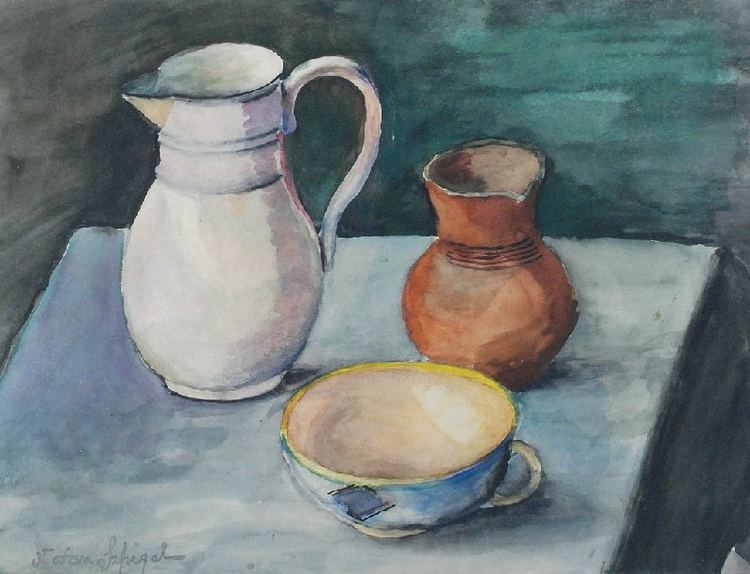Name Natan Spigel | ||
 | ||
Natan Spigel (also: Nathan, Szpigiel/Spiegel/Szpigel) (1886–1942) was a Jewish painter born in Poland. Spigel was a key member of the influential Expressionist group Jung Idysz. He exhibited his works throughout Europe until his internment in Radomsko ghetto in 1939. Natan was murdered in Treblinka in 1942, and only about 20 of his works survived World War II.
Life and artistic career
Natan Spigel was born into an Orthodox Jewish family in Łódź, now in Poland, in 1886 (or 1900). The remnants of his family are now based in London. He studied art as a young man and then in 1920 traveled to Rome on sponsorship, where he continued his studies with Henryk Glicenstein. His first major success, in Paris, was the invitation to show in the 1924 Salon d'Automne, although his first public exhibition was in Lodz in 1921. He was invited to exhibit in London at the Ben Uri Gallery in 1930 and also, at a joint exhibition with Jacob Epstein. In Poland Natan Spigel was regularly exhibiting his work, with shows in Lodz, Cracow and Warsaw (1921, 1928 & 1937).
Spigel considered himself a Jewish painter, and his painting reflected this focus, depicting scenes of Jewish life in Poland, as well as portraits and still-life, in both watercolours and oils. A particularly distinctive feature of some of his watercolours was his use of varnish to give age and contrast. Spigel was a key member of the Expressionist group Jung Idysz. He was also a member of ‘Start’, a group of mainly Jewish, Lodz artists, who exhibited across Poland throughout the 1920s and '30s. By the 1930s, his work was in collections in Poland, London, and Israel.
Shortly after the German invasion of Poland, in 1939, Natan Spigel, together with his family, was interned in the Radomsko ghetto. He continued to paint during this time. He perished in the Treblinka extermination camp in 1942.
Today Natan Spigel’s work can be seen in public collections in Tel Aviv, London, Lublin, and Ein Harod. Only about 20 of his paintings are definitely known to have survived.
